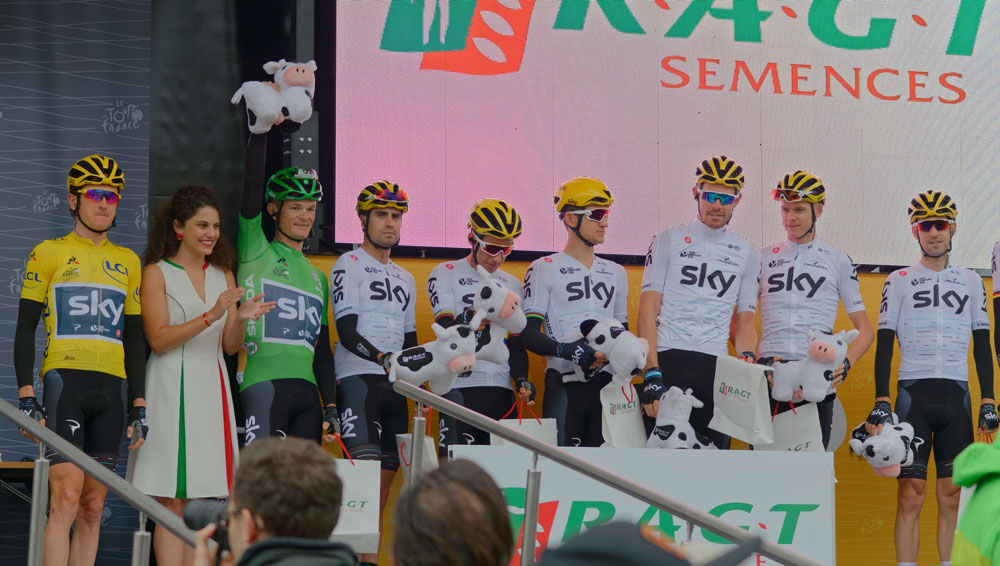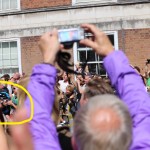
I have never watched cycling before. For the obvious reason: that men peddling away on bikes for five hours does not sound that interesting.
However, when you are working with Sky Sports, you sometimes get caught up in the excitement. It happened with golf, and now it appears to have happened with cycling, too.
Plus, I have stopped watching Formula One since Sky announced they were getting almost-exclusive live coverage of it. So, I am in the market for a new boring sport to watch. Cycling seems an excellent candidate.
Not as boring as it looks
A cycle race may seem like a bunch of people riding around for hours before sprinting towards the finish line at the very end. And, to a large extent, it is that. It is much easier to ride together in a peloton, so that is what happens, especially on the flat stages.
But it becomes more complicated than that. Riders can “attack”, which means they cycle off up the road and the peloton has to decide between chasing them down or letting them go. Cycling by yourself or in a small group is tiring, so it then becomes a competition to see if they can build up a big enough lead to hold off the peloton when they speed up towards the end.
Tour de France has four different jerseys:
| Jersey | Description |
|---|---|
| Yellow jersey | This is the most prestigious one: and the one Wiggins and Froome raced for and won. It is a sumation of your time for each stage: the one with the lowest is the winner. You also get time bonuses for winning stages. |
| Green jersey | The points jersey. You get points for winning stages, intermediate sprints (designated points along the route) and reaching the top of hills first. |
| Polka dot jersey | King of the Mountains. This is given to the rider who scores the most points from reaching the tops of hills first. |
| White jersey | Best young rider, similar to general classification but with an age limit. |
So, lots going on. And because different riders are aiming for different jerseys, tactics change a lot. It’s a team sport. If you want to win a sprint, for example, it is easiest if you have a line of team-mates to get you in the perfect position.
Or, if you are competing for the yellow jersey, it makes sense have some of your team mates attack. That way, the yellow jersey is forced to either chase them down, tiring himself out so you can pass him at the end, or leave the attackers to the stage, taking valuable time out of his lead.
Grand Depart in Leeds
There are four big races in cycling, known as the grand tours. These are the Tour de France, Giro d’Italia, Vuelta a España and Tour de Yorkshire. Some people dispute whether the latter is really a grand tour.
But Yorkshire is certainly a hub for cycling. In 2014, the Tour de France started here, with the Grand Depart starting on The Headrow in Leeds. I was there.
This year’s tour
Chris Froome took the win in relatively easy fashion. While his winning time was narrower than his previous victories, and he briefly lost the yellow jersey at one point, it never really looked in that much danger given how dominant Team Sky was.
The real outrage of the tour was that Warren Barguil was awarded the combativity prize. He rode an excellent race and won the King of the Mountains jersey fair and square. But how anyone other than Thomas De Gendt, who spend over 1,000km in breakaway groups (mostly leading them), could be awarded the combativity jersey is a mystery to a novice cycling-watcher such as myself.
Image courtesy of Wiki Commons.
Don't have time to check my blog? Get a weekly email with all the new posts. This is my personal blog, so obviously it is 100% spam free.
Tags: cycling, tour de france
This entry was posted on Friday, August 4th, 2017 at 11:00 am and is filed under Sport. You can follow any responses to this entry through the RSS 2.0 feed. Both comments and pings are currently closed.

